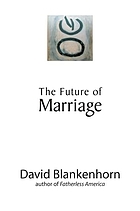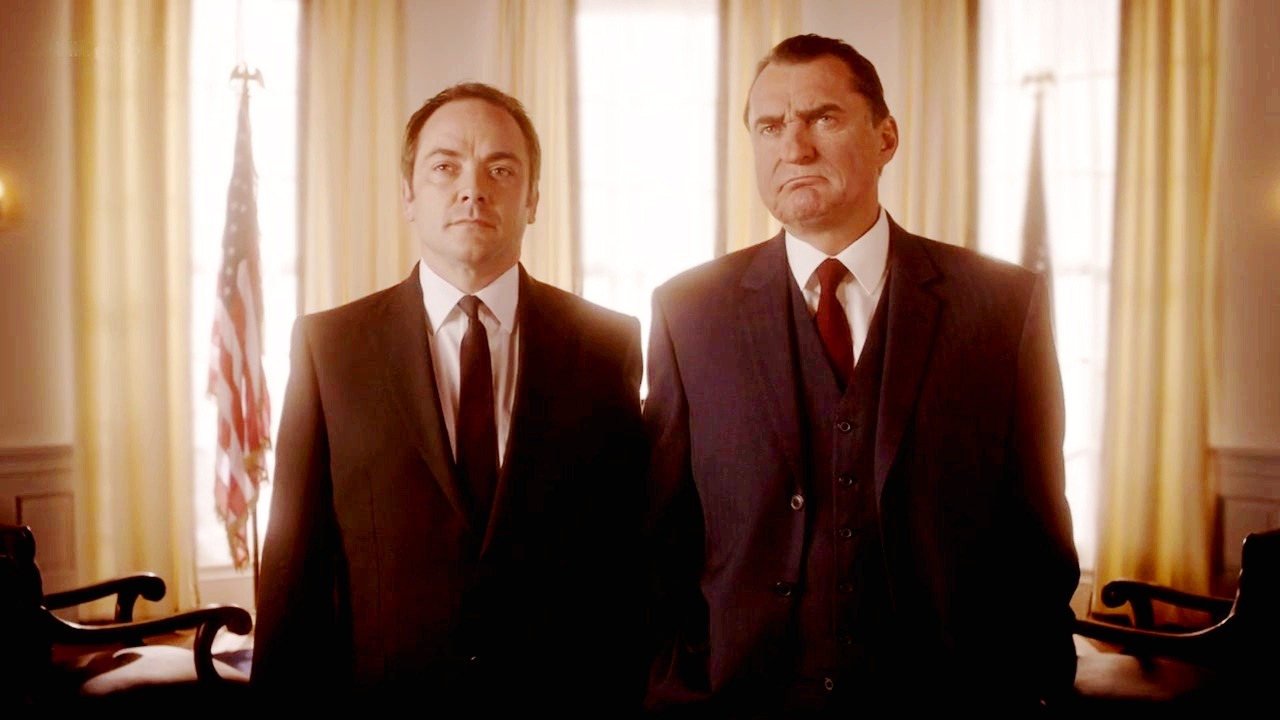After reviewing David B.'s "goods in conflict" defense of heteros-only marriage, I've rather abruptly found myself done with The Future of Marriage. It's hard to feel like bothering with the final chapter ("Determining Marriage's Fate") or the odd appendix ("Topics in the Anthropology of Kinship"). I mean, it's pretty clear at this point that Blankenhorn's historicized understanding of marriage, his beliefs about what "goods" it brings into the world, and what (lesser) "goods" queer equality might bring, and ultimately his erasure of queerly-inclined children (and children raised by queer parents), all do me in.
Still, to be complete, here are a few scattered thoughts about the final sections of The Future of Marriage.
Chapter 8: Determining Marriage's Fate
This is a chapter with a lot of tables, a lot of data. David B. is making the case for the institution of (a certain type of) marriage as a social and personal good, so he combs through social science data from around the world, attempting to argue that nations with a strong marriage culture do better in a variety of other measures.
The problem, in my mind, is that the numbers don't really make his case for him. In fact, they often seem to undercut the marriage-is-under-threat narrative he's attempting to build. The percent of children in the United States in 2000 living with two married parents, for example, is 68.1% -- down from 85.2% in 1970. That's a jump, certainly, but sixty-eight percent still means that over two-thirds of children in the U.S. live in the care of a married couple. 59.7% of children were living with "their own married parents," by which he presumably means the bio-parents of the child(ren) in question. That means that an overwhelming majority of children living with married parents are living with their own bio-parents (fewer than 10% live in "marriage" households formed through divorce and remarriage, adoption or other means).
Is the glass half full or half empty? I guess it's all you read the numbers.
And that's if you buy David B.'s assumptions about married-bio-parent households being a presumed "best state" situation for children to be raised within the bounds of. Which I've already pointed out is a far from inevitable conclusion to draw from the available evidence.
My point is this: The United States IS ALREADY a profoundly "marriage culture" nation. We privilege people who obtain "married" status in a variety of subtle and not-so-subtle ways. The fact that the "health" of (a certain type of) marriage culture in the U.S. has dropped, according to Blankenhorn's composite Index of Marriage's Institutional Vitality, from 77.6% in 1970 to 62.5% in 2000 seems both extremely understandable, given the cultural upheavals of the last forty years, and not a serious cause for alarm. I would argue what we're seeing in those numbers is the slipping away of hegemony. The return, in fact, from a unique period of (quasi-imposed, quasi-falsified) cultural uniformity in the postwar era, to a state of affairs much more familiar within American history: contested cultural norms and values. In 1970, as America exited the 1960s, the numbers Blankenhorn cites -- marriage rates, intact first marriages, married parenthood, etc. -- would still reflect the anomalous period in which the Depression and WWII generations (who'd delayed marriage) and the immediate postwar generation (who hurried it) created the baby boom and the precipitous drop in the average age of marriage for both women and men.
Toward the end of this chapter, we return to the ladyscholar hating as David B. returns to the work of historian Stephanie Coontz whom he has taken a real dislike to. "Stephanie Coontz," he asserts, "has made a career out of arguing that her own philosophical preferences and the laws of historical inevitability are one in the same" (236). She "consults history and announces that anyone" who thinks families were once stronger than they are now "suffers from a mental disability called 'nostalgia' " (236). I've not read The Way We Never Were, Coontz's seminal social history of 1950s nostalgia, but I'd be extremely surprised if she characterized nostalgia as a "mental disability." But Blankenhorn is determined to remind us that Coontz is an "activist" (the horror!) and, in fact, is allied with that other evil ladyscholar Judith Stacey, with whom she founded the Council on Contemporary Families, "a group largely devoted to defending the upswing in divorce and unwed childbearing," as David puts it.
Such a characterization might surprise the CCF, which articulates their mission as one "to provid[e] the press and public with the latest research and best-practice findings about American families," listing ageing, children and parenting, economic issues, gender and sexuality, health and illness, marriage, partnership and divorce, singles, and work-family issues as all residing under their umbrella of scholarly and political interests. Their mission appears to be responsive rather than prescriptive, reading in part: "the Council's mission is to enhance the national understanding of how and why contemporary families are changing, what needs and challenges they face, and how these needs can best be met."
It appears to me that David Blankenhorn has confused "enhancing the national understanding of how and why" with "defending," and identifying "what needs and challenges" families face and "how these needs can best be met" with blind advocacy.
I think, in the end, we are perhaps running up against a vast gulf in values when it comes to the political and social use of shame and judgement. David B. is upset because those of us at the Coontz-Stacey end of the spectrum see family diversity as both inevitable and neutral. We ask "what do these families, of all shapes, need to thrive -- and how to we facilitate them meeting those needs?" David B., on the other hand, presume to know what families need (240-241):
1. A higher success rate for first marriages
2. A lower rate of childbirth outside of marriage ("unwed childbearing")
3. No "legal redefinition" of marriage
4. Public scrutiny and regulation of the fertility industry [a point I actually agree with him on]
5. A national conversation about "what marriage is." (Hint: NOT a "private relationship between two individuals")
Marriage's "fate" is in our hands ... and it's clear David B. thinks we're doing bad, bad things to it.
Shame on us.
Appendix: Topics in the Anthropology of Kinship
I'm not exactly sure what this appendix is doing in the book, other than giving David B. a place to dump all of the random stuff he wants to say about non-dyadic, non-monogamous Christian model marriages but couldn't get into the main text of the book. He reserves particular distaste for polygyny, polyandry, and polyamory which I want to highlight here for its bisexual stereotyping (yup, you read that arightly).
Polyamory is apparently "what's new" and "hot" for the same-sex marriage crowd these days -- those poly folk, so trendy! "Polyamory is tomorrow's big new idea, being worked out today by creative theorists in academic conferences, advanced support groups, and little journals" (256).
*fans away the fumes of anti-academic disdain*
First of all, the historian in me has to point out that poly is not "tomorrow's big new idea," unless it's a new idea that's been percolating for at least a hundred and fifty years. Because the folks at Oneida were all over the group marriage thing, no "particular attachments," blah blah blah. This may be a marginal or minority practice, but it is not some latter-day fad invented by a bunch of post-structuralists in a smokey back room.
Also: advanced support groups? little journals? Say what?
But that's David just getting started. Because it's not the academics who are arguing so radically that "the state 'should have no right to privilege or impose one form of family structure or sexuality over another' " (gasp! *clutches pearls*) -- it's us horny bisexuals as well (256-257):
After all, if same-sex marriage becomes normative, on what moral basis could a fair-minded person possibly oppress bisexual polyamorous marriage? Particularly when bisexual persons will be making exactly the same claim as homosexual persons about the need for marriage as a legal institution to accommodate and respect sexual orientation?" (259).First of all, let me point out that all of these things David B. brings up with such appalled hand-wringing? He's nothing if not accurate in the sense that I do believe that "marriage as a legal institution [should] accommodate and respect" human sexual variety and diverse family forms. So the whole academic bisexuals will ruin marriage in groups! thing fails to excite me to moral outrage.
But I also want to tease apart the conflation he's created here between poly folks and bisexual folks.
Yes, polyamorous people may be bisexual. They may form mixed-sex relationships in which some people are bisexual and some are monosexual or otherwise-sexual. Yes, bisexual people may be polyamorous. But being a bisexual person, in the sense that you have the capacity to be sexually desiring of people of your own sex and people of other (not-your-own) sexes, is not the same as desiring or forming a polyamorous relationship.
Being a person in a polyamorous relationship is not the same as being bisexual.
So while I support creating a flexible cultural and legal understanding of marriage that can accommodate -- dare I say celebrate! -- more-than-two relationships as well as two-person partnerships, that stance on marriage has no direct connection to my sexual orientation as bisexual. Bisexual people, just like monosexual people, experience a wide range of desires and exhibit a wide range of partnership behaviors. We don't require multiple partners due to our bisexual capacity for desire, anymore than a straight man requires more than one straight woman to satisfy his attraction to both blondes and brunettes, or short as well as tall women, busty and flat-chested. We fall in love with particular people, all of us, and our capacity to love and sexually desire others is only as material to our individual commitments as we want or allow it to be.
So there you have it folks. The Future of Marriage.
I have to say, I hope that future is as expansive as David B. fears it will be.
Next week, I'm going to round out this series with some notes on the treatment of male vs. female proponents of same-sex marriage. Stay tuned!



























